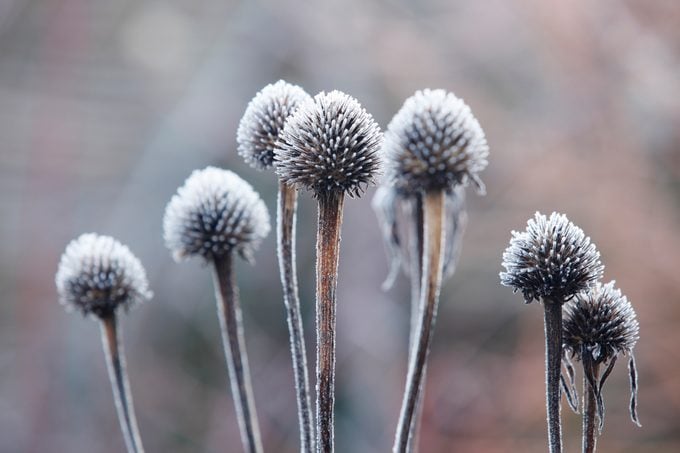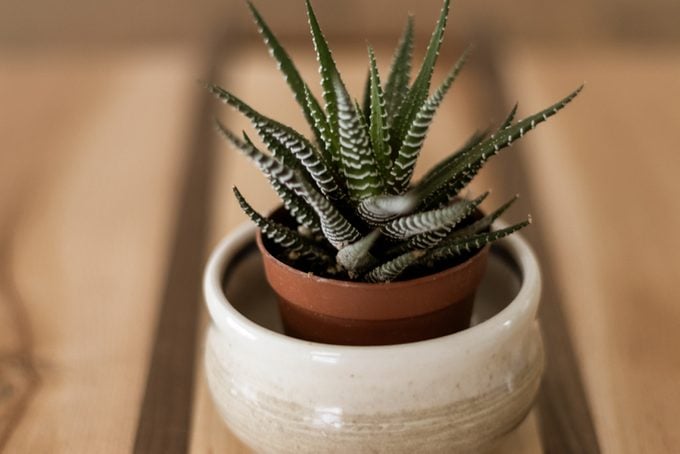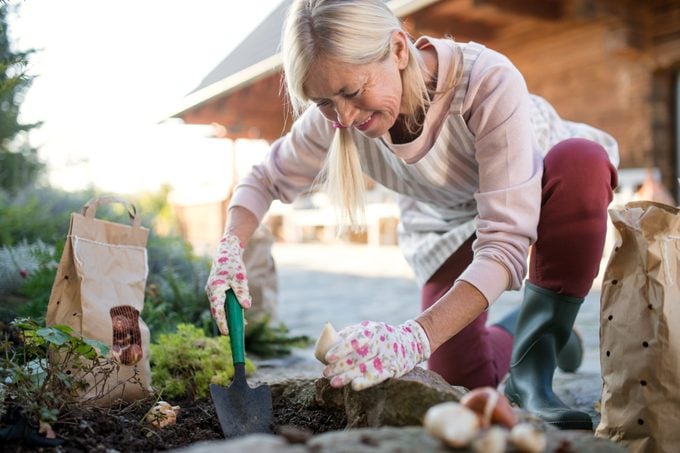How to Prepare Your Garden for Winter in Two Days
Updated: Oct. 28, 2022
For a healthy spring landscape, spend a fall weekend preparing your garden for winter. It's easy with our straightforward, how-to guide.
Our editors and experts handpick every product we feature. We may earn a commission from your purchases.
Before you put your feet up and settle in for the garden off-season, dedicate a few days to getting your landscape tucked in tight. Follow these simple steps to tidy up, and you can finish preparing your garden for winter in just one weekend.
Day One (Morning): Trim Plants and Tidy the Garden

Divide your overgrown perennials and cut back the dead foliage on others. Remove any spent annuals and vegetables from the garden—roots and all—and add any disease-free debris to your compost pile. As you yank out plants and weeds, be mindful of pests and diseases. Double-bag and discard diseased plants or foliage.
“Some diseases and pests overwinter in plant debris,” says Melinda Myers, horticulture expert. “Remove them in fall to prevent infection next year.”
But not everything in your landscape needs to go. “Leave healthy perennials, such as purple coneflowers, black-eyed Susans, and native grasses—they provide habitat for beneficial insects, food for birds and interest for the winter landscape,” Melinda says.
Check out the top 10 fall flowers for a perennial garden.
Day One (Afternoon): Protect Your Garden and Prepare for Winter

Some plants and containers struggle in severe winter temps. Bring pots and non-hardy plants indoors or at least out of the elements. If you’re worried about the survival of plants or pots that must stay outdoors, wrap them in blankets or burlap. As an added measure when preparing your garden for winter, surround plants with wood chips or bags of potting mix to keep the roots snug and safe from the elements.
Cover the plant’s roots, too.“To avoid frost heaving—when the freezing and thawing of the soil shifts and pushes shallow-rooted perennials and bulbs out of the ground—apply evergreen boughs or weed-free straw around your perennial and bulb plantings after the ground freezes,” Melinda says. “This keeps the soil consistently cold even during a winter thaw.”
It’s also a good idea to nourish perennials and annuals by incorporating compost and shredded leaves. Newly planted trees and shrubs are especially vulnerable in the winter and need a little extra attention.
“Protect your garden from hungry animals by placing a cylinder of hardware cloth around (not touching) the trunk of young trees and shrubs,” Melinda says. “Sink it several inches into the soil to deter voles, and make sure it is at least 4-feet tall in order to keep rabbits away.”
These books will inspire gardeners all throughout winter.
Day Two: Plant for Spring and Maintain Tools

Once your landscape is all cleaned up, get a jump-start on next year’s garden and plant what you can now. Fall is a great time to plant trees, shrubs, perennials and bulbs. Simply make sure you get them in the ground before the soil gets too cold so roots have time to become established.
Also use this time to clean and sharpen garden tools, disinfect pots and make necessary repairs around the landscape. It will make your spring prep a breeze! With a yard that’s been perfectly prepped for the winter season, you can rest easy and cozy up for the cold months, dreaming about next year’s garden.
Fall cleanup: 8 garden chores you should never skip.
Bonus! 3 More Ways to Prepare Your Garden for Winter
• Divide and transplant some perennials. Hostas, peonies and early bloomers—such as coral bells, phlox, poppies and daisies— benefit from being thinned out.
• If you’re an avid veggie gardener or you think your soil will benefit from a dose of organic matter, sow a cover crop to protect and enrich the soil.
• Drain your garden hose and bring it in for winter. Wipe it with a rag to remove any mud and moisture, then store it flat in a dry, dark place.

